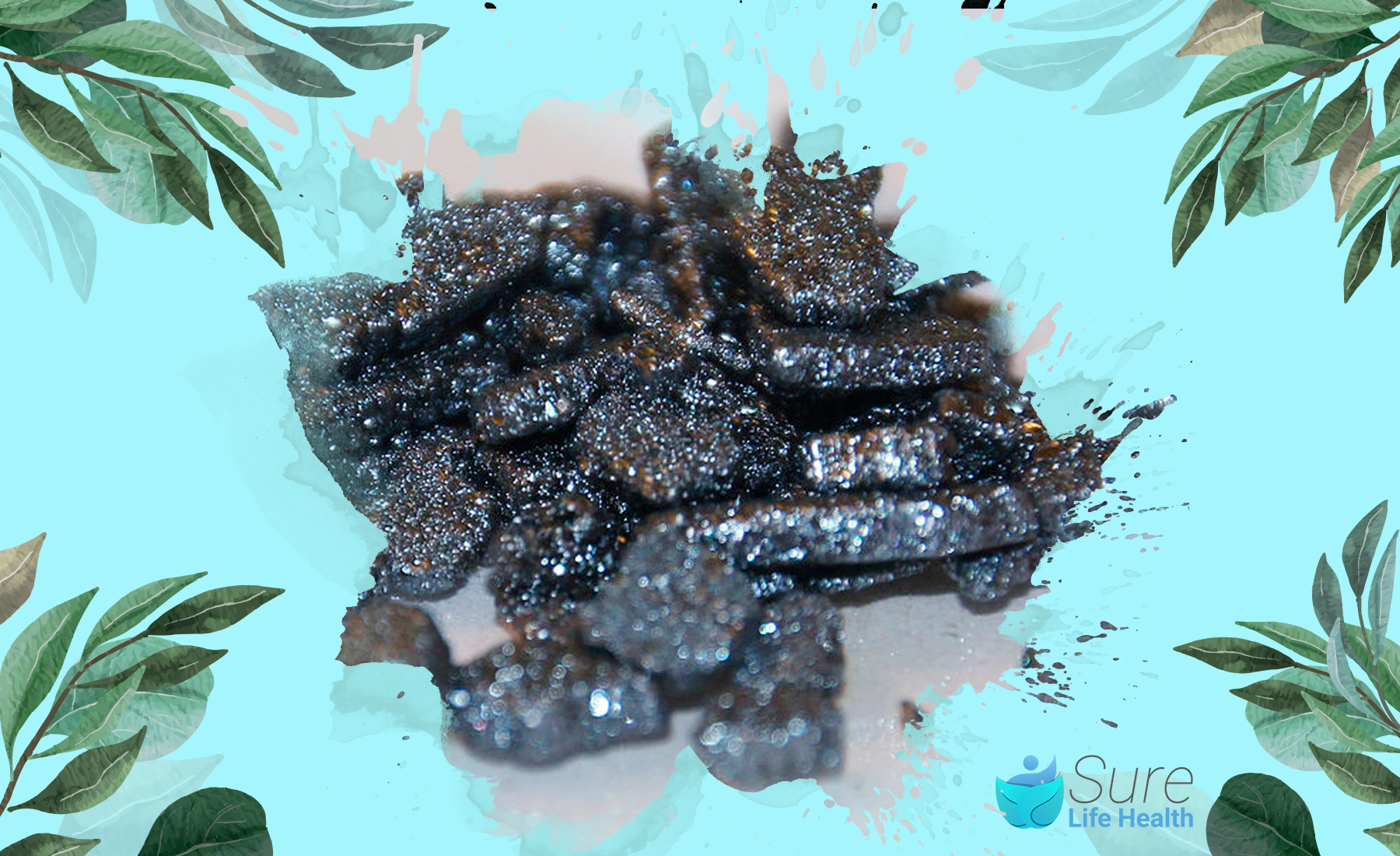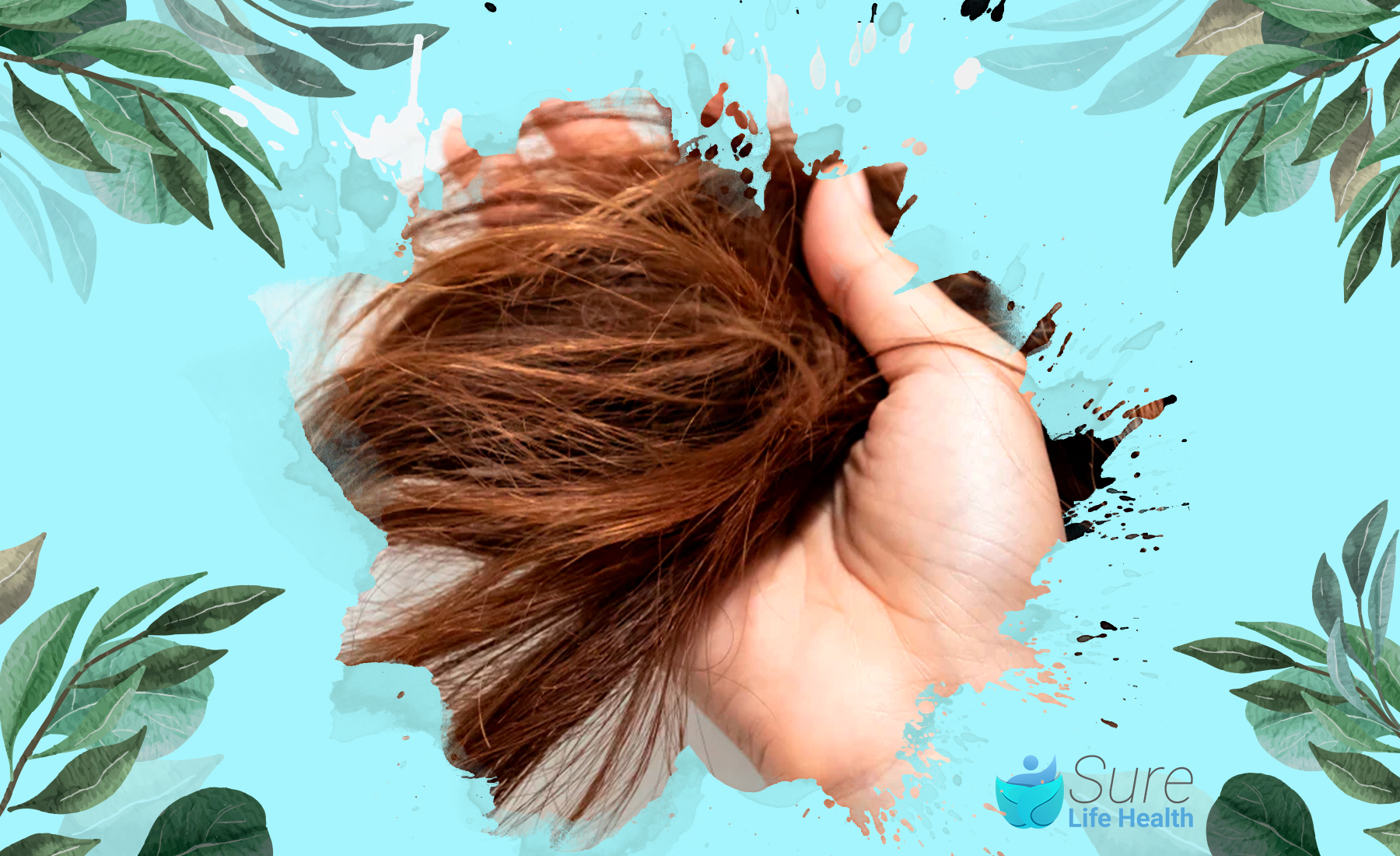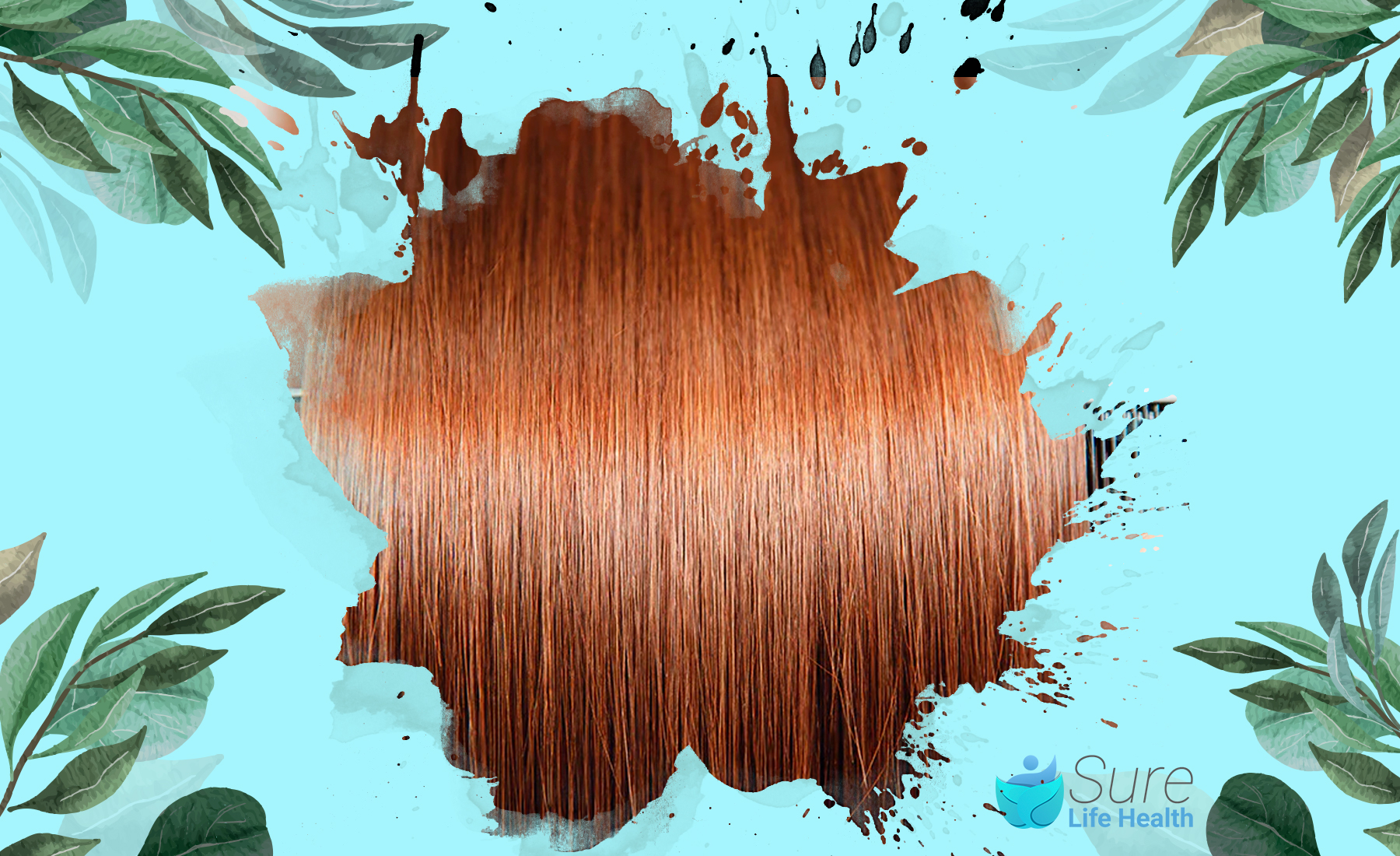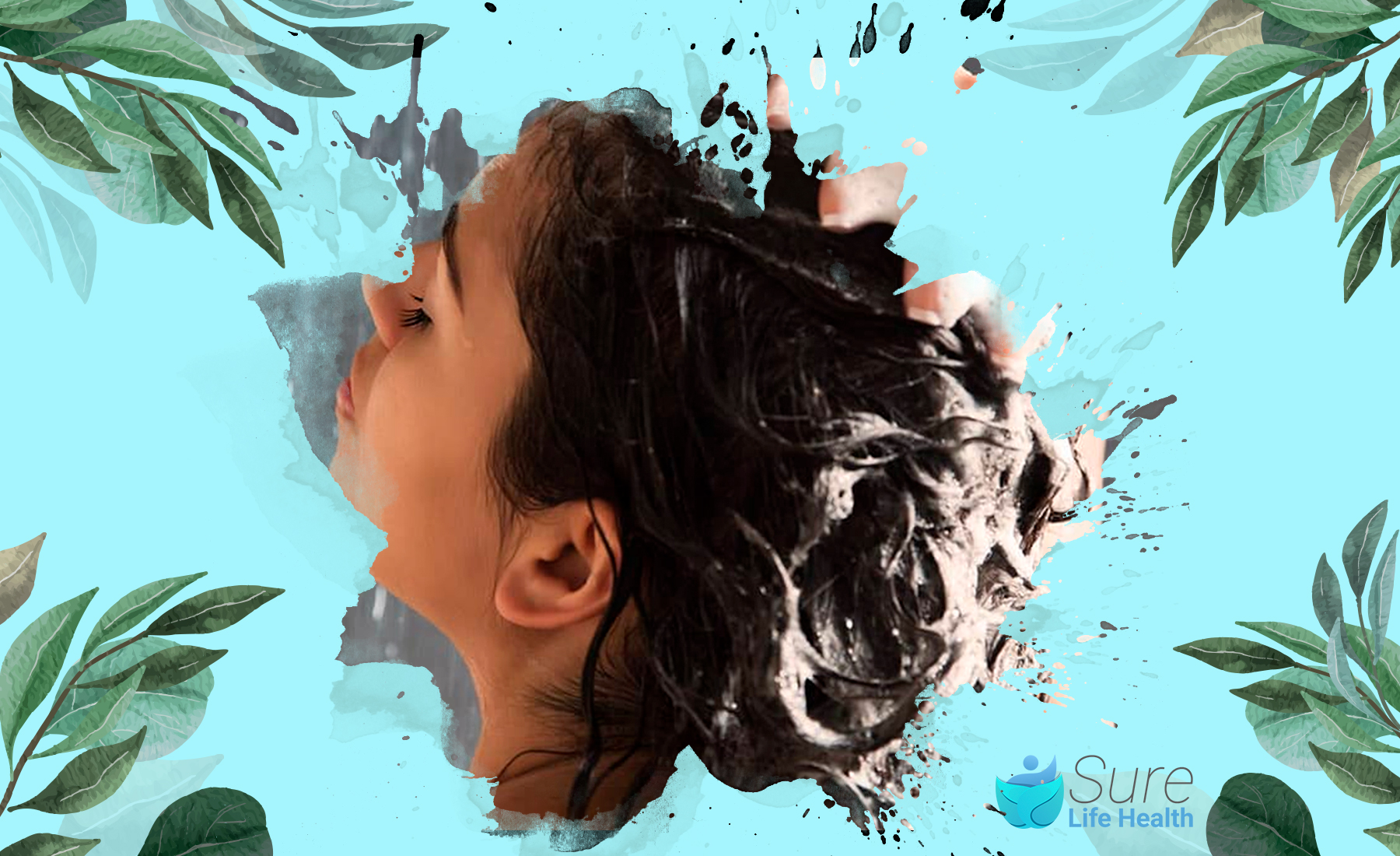Encountering iodine supplements might lead you to ponder, “What are the benefits of iodine on hair?”
In this blog, Sure Life Health discovers the wonders of iodine for promoting hair health and how you can harness its potential for boosting hair growth.

Benefits Of Iodine On Hair
Here are some benefits of iodine on hair that you may not know.
Promotes Hair Growth
A common issue with iodine deficiency is an imbalance in thyroid hormones, leading to hair loss.
By maintaining adequate iodine levels, you support healthy thyroid function, crucial for hair growth.

Prevents Hair Dryness and Brittleness
Iodine plays a key role in regulating scalp and hair moisture. Symptoms of iodine deficiency include dry, brittle hair.
Adding iodine-rich foods to your diet or using hair products infused with iodine can combat dryness and enhance your hair’s texture.

Restores Hair Shine And Strength
Iodine aids in producing sebum, the natural oil from the scalp, acting as a natural conditioner that imparts shine and strength to your hair.
Insufficient iodine can reduce sebum production, leaving hair dull and weak.
Fights Scalp Infections
The antiseptic properties of iodine help in preventing and treating scalp infections, such as fungal issues, which can cause significant hair loss and damage.
Regular application of iodine directly to the scalp or using iodine-enriched shampoos ensures a healthy, infection-free scalp.
Impact Of Iodine On Hair Loss
Iodine is a trace element essential for your body’s normal functions, playing a crucial role in cellular activities. Thyroid hormones, regulated by iodine, are instrumental in controlling hair follicle development and regeneration.
When iodine levels are insufficient, thyroid hormone production can falter. Regeneration of hair follicles can be halted. This is why an iodine deficiency is often linked to hair thinning and loss. Ensuring adequate iodine intake can help mitigate hair loss attributable to these deficiencies.
Conversely, an excess of iodine can lead to hyperthyroidism, where the thyroid becomes overactive. This condition, especially if severe and untreated, may cause significant damage to your hair’s structure and health.

Choosing the Right Type of Iodine
Before incorporating iodine into your hair care routine, it’s essential to choose the appropriate form. Iodine is available in several types, such as tinctures, povidone-iodine solutions, and iodized salt. For topical hair applications, povidone-iodine solutions are ideal. They are formulated specifically for external use.
It is important to note that iodine is a potent chemical element. It should not be applied directly to the hair or scalp in its undiluted form. Direct application can be too harsh and potentially damage both the hair and scalp. Instead, look for hair care products that contain a safe concentration of povidone-iodine, designed to be gentle yet effective when used as part of a regular hair care regimen.
Using Iodine on Scalp to Fight Hair Loss
Step 1: Create an Iodine Hair Treatment Prepare a simple yet effective iodine treatment to enhance your hair and scalp health. Here’s how to make it:
Ingredients:
- 2-3 drops of povidone-iodine solution
- 2 tablespoons of carrier oil (such as coconut oil or olive oil)
Instructions:
- In a small bowl, thoroughly mix the povidone-iodine solution with the carrier oil.
- Ensure your hair is clean and dry before application.
Step 2: Perform a Patch Test Given iodine’s potency, it’s critical to conduct a patch test to prevent adverse reactions. Apply a small amount of the mixture to a discreet skin area, like your forearm, and wait 24 hours. If you notice redness, itching, or irritation, refrain from using the treatment on your scalp.
Step 3: Application Gently apply the iodine treatment directly to your scalp, using your fingertips to massage it in, especially focusing on areas prone to dryness or flakiness. This step will help tackle scalp issues and foster a healthier environment for hair growth.
Step 4: Let It Sit Leave the treatment on your scalp for 15 to 30 minutes. Optionally, cover with a shower cap to boost absorption and prevent the iodine from evaporating.
Step 5: Rinse and Shampoo After the waiting period, rinse your hair thoroughly with warm water. Follow up with a gentle, sulfate-free shampoo and conditioner to cleanse any remaining residue and nourish your hair.
Step 6: Repeat as Needed Depending on your hair and scalp condition, use this treatment once a week or as required. Regular use should gradually improve your hair’s texture, reduce dryness, and promote a healthier scalp.

Important Tips To Keep In Mind
The benefits of iodine on hair are amazing. But it’s crucial to follow these guidelines to ensure safety and effectiveness:
- Avoid Direct Application: Never apply iodine directly to your hair or scalp without diluting it with a carrier oil. Iodine in its pure form can be extremely harsh and may cause dryness and irritation.
- Check for Allergies and Sensitivities: If you have a known allergy or sensitivity to iodine, or if you have thyroid conditions, consult with a healthcare professional before starting any iodine treatments. These conditions could be exacerbated by the use of iodine.
- Conduct a Patch Test: Always perform a patch test by applying a small amount of the iodine treatment to a discreet area of your skin, such as your forearm. Wait for 24 hours to check for any adverse reactions like redness, itching, or irritation.
- Discontinue if Necessary: If you experience any negative reactions during the patch test or after applying the treatment to your scalp, stop using the product immediately and wash the area with water. If symptoms persist, seek medical help.
Symptoms of Iodine Deficiency
Iodine deficiency is a common health issue that can lead to various symptoms, primarily due to its impact on thyroid function. Here are some of the symptoms associated with iodine deficiency and related thyroid disorders:
- Swelling of Thyroid Glands: Often noticeable as an enlargement in the neck.
- Visible Goiter: A lump that can be seen and felt on the neck, indicating thyroid gland swelling.
- Weight Gain: Unexpected weight increase without significant changes in diet or physical activity.
- Fatigue and Weakness: General feelings of exhaustion and reduced energy levels.
- Thinning Hair: Noticeable loss of hair density, which can be a direct result of poor thyroid function.
- Dry Skin: Changes in skin texture, becoming dry and rough.
- Feeling Colder than Usual: An increased sensitivity to cold temperatures.
- Slowed Heart Rate: A decrease in heart rate, which can affect overall energy levels and stamina.
- Learning and Memory Difficulties: Problems with focus, memory retention, and overall cognitive function.
- Heavy or Irregular Periods: Changes in menstrual patterns, which can be irregular or heavier than usual.
If you suspect that you or someone you know might be experiencing these symptoms, it is crucial to consult a licensed doctor or healthcare provider. A medical professional can provide a definitive diagnosis and recommend appropriate treatment.
Conclusion
The remarkable benefits of iodine on hair highlight the importance of incorporating this essential mineral into your hair care routine. By doing so, you can experience stronger, smoother hair and witness a significant improvement in scalp health. As you integrate iodine into your regimen, you’re likely to say goodbye to many common scalp issues.
We’d love to hear about your results and experiences—please share them in the comments below! If you’re facing any other hair challenges or have questions about hair care, don’t hesitate to reach out. We’re here to help with just one question away.
Don’t forget to explore more informative and helpful blogs from Sure Life Health, where we continue to uncover the best in natural health care.
Professor Gaye Cunnane, PhD, MB, FRCPI
As the Director of Health and Wellbeing at RCPI, Professor Gaye Cunnane is at the helm of initiatives aimed at enhancing the health and well-being of RCPI Trainers and Trainees. Her role extends beyond administration; she is also a respected clinical professor of rheumatology and a consultant rheumatologist at Trinity College Dublin (TCD) and St James’s Hospital. Prof. Cunnane’s medical journey began at TCD, where she graduated from medical school, and her path has been marked by both clinical and academic excellence.
After completing her basic clinical training in medicine, she embarked on PhD studies at University College Dublin and St Vincent’s University Hospital. Her research during this period was focused on prognostic markers in early inflammatory arthritis, a project that saw her collaborating with esteemed universities across Europe, including in Switzerland, The Netherlands, the UK, and Sweden.
Prof. Cunnane’s career took her to the University of California, San Francisco, where she spent three years delving into research on new treatments for lupus. Her academic prowess led her to the University of Leeds in 2001 as a senior lecturer, before returning to Ireland in 2003 to assume her current roles. She has also served as the National Specialty Director for Rheumatology training in Ireland, Programme Director for Basic Specialist Training with RCPI, and as a past President of the Irish Society for Rheumatology.
PUBLISHED ARTICLES
“Rheumatic disease differentiation using immunoglobulin G sugar printing by high-density electrophoresis”: Published in The Journal of Rheumatology, this study reflects her in-depth investigation into rheumatic diseases.
“Benefits of exercise in patients with rheumatoid arthritis: a randomized controlled trial”: This research work, highlighting the positive impact of exercise on rheumatoid arthritis, underscores Prof. Cunnane’s dedication to practical, patient-centered research.
Additionally, Prof. Cunnane has made notable contributions to the Annals of the Rheumatic Diseases, discussing early referral, diagnosis, and treatment of rheumatoid arthritis. She has also been involved in a study on the NCBI platform investigating exercise benefits in rheumatoid arthritis patients.
Professor Gaye Cunnane’s career is a testament to her commitment to improving patient outcomes in rheumatology through rigorous research, clinical excellence, and dedicated teaching. Her work continues to influence the field of rheumatology, both in Ireland and internationally.

